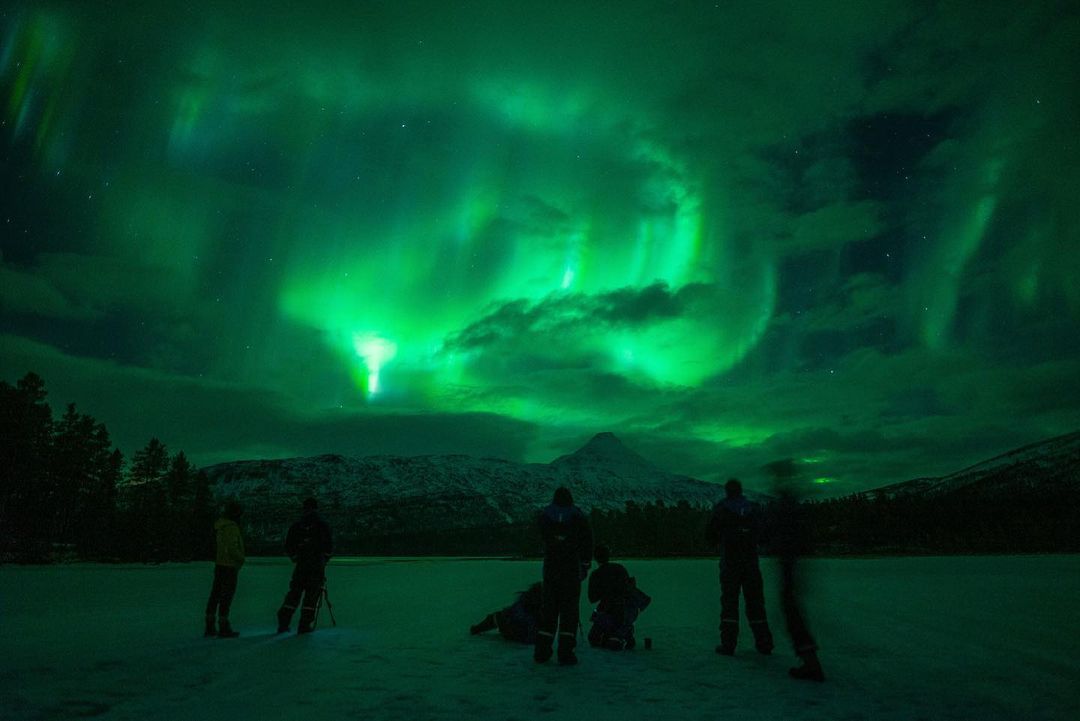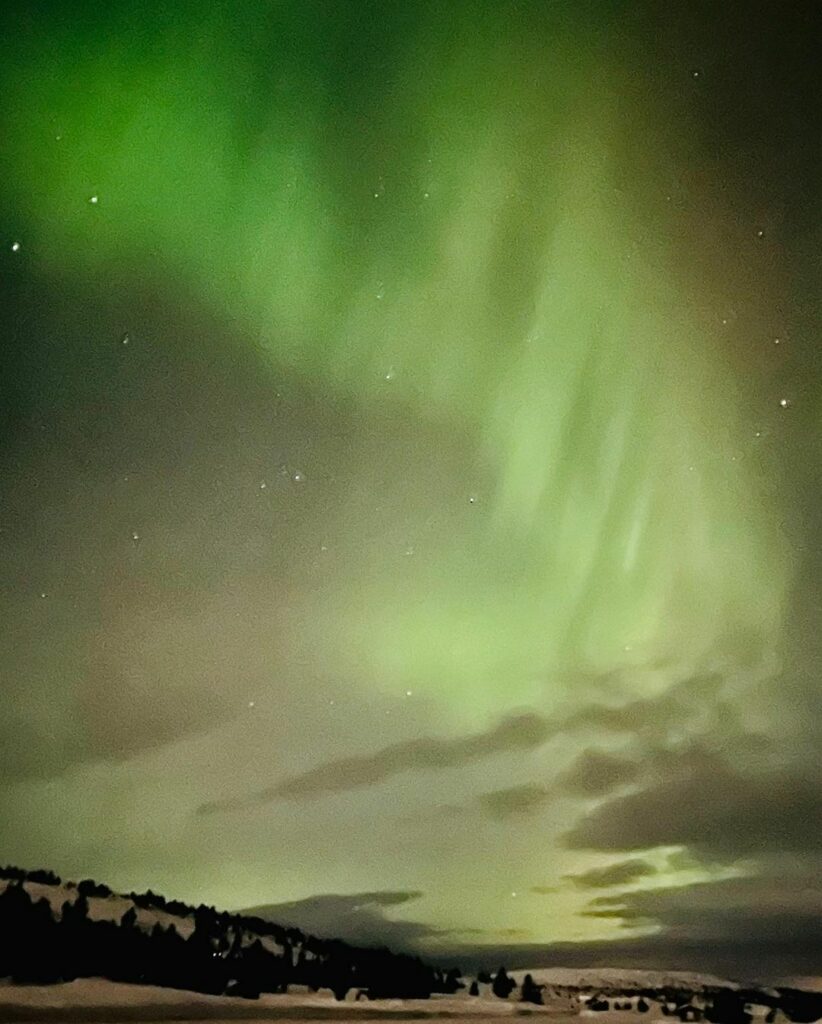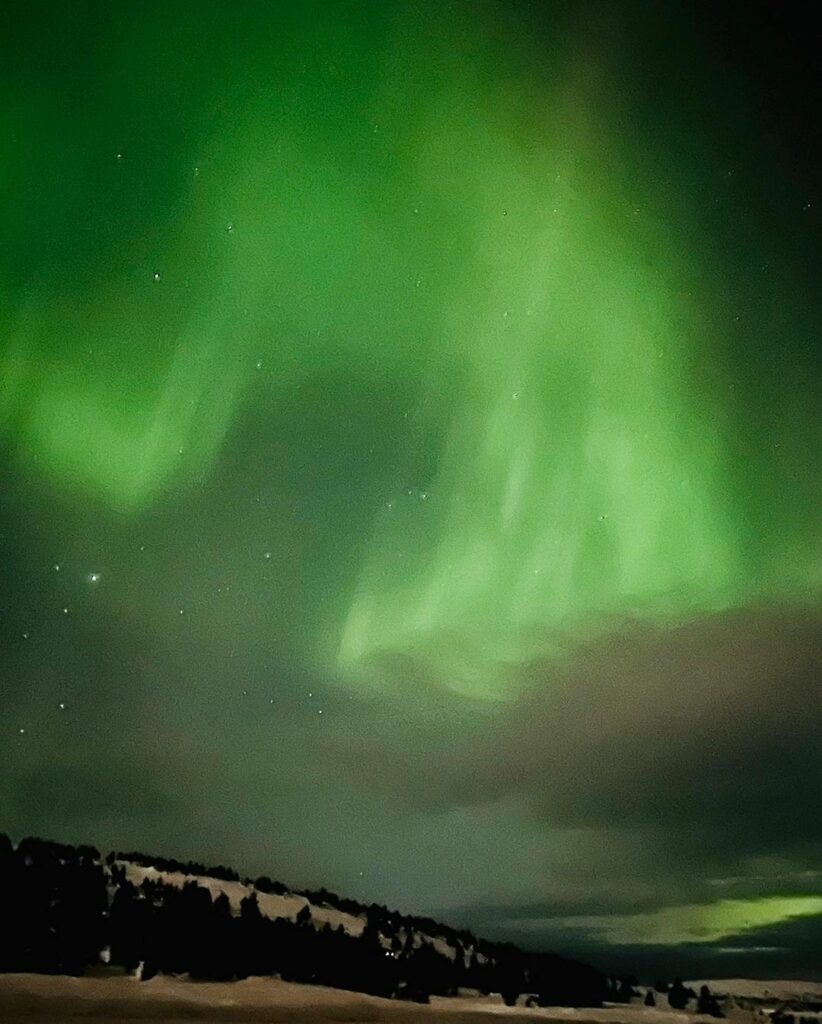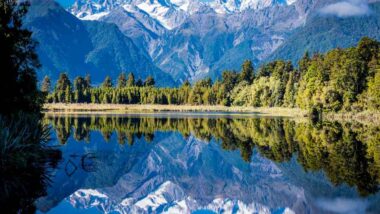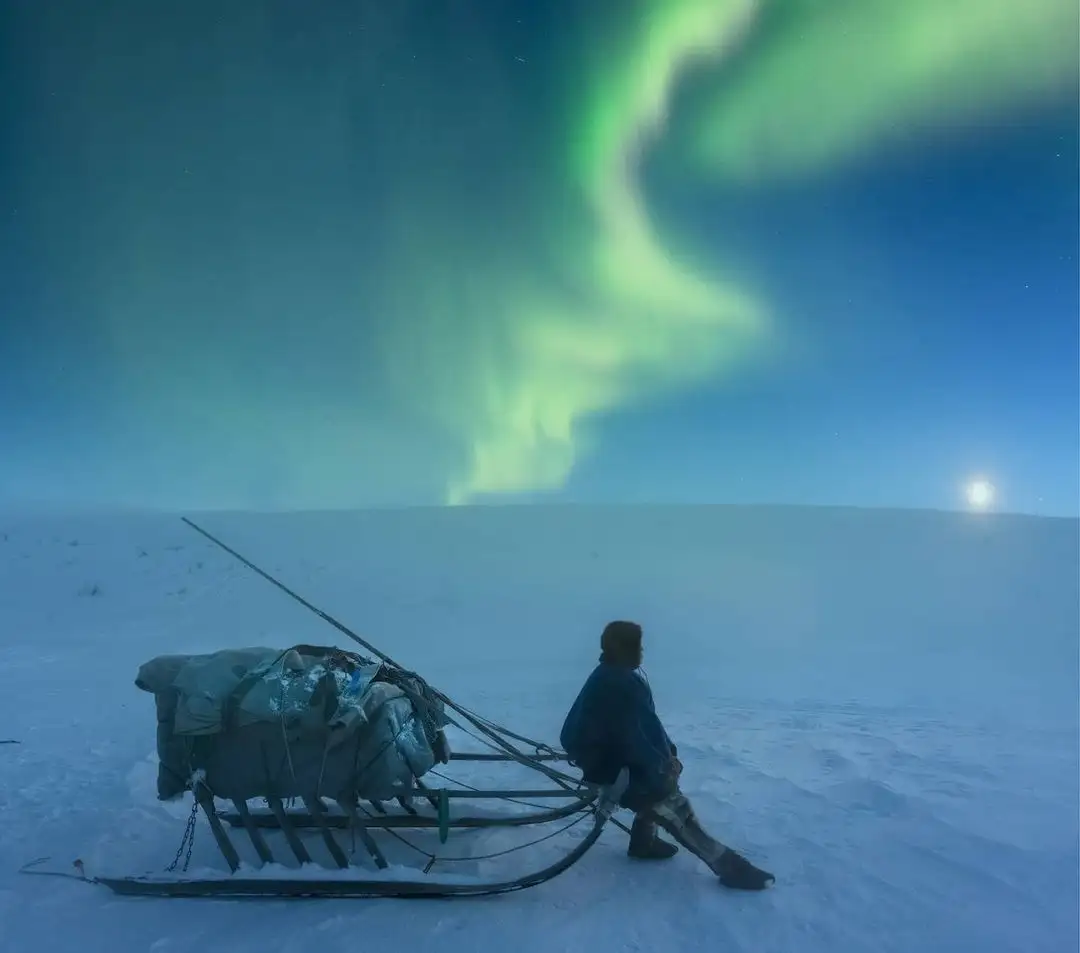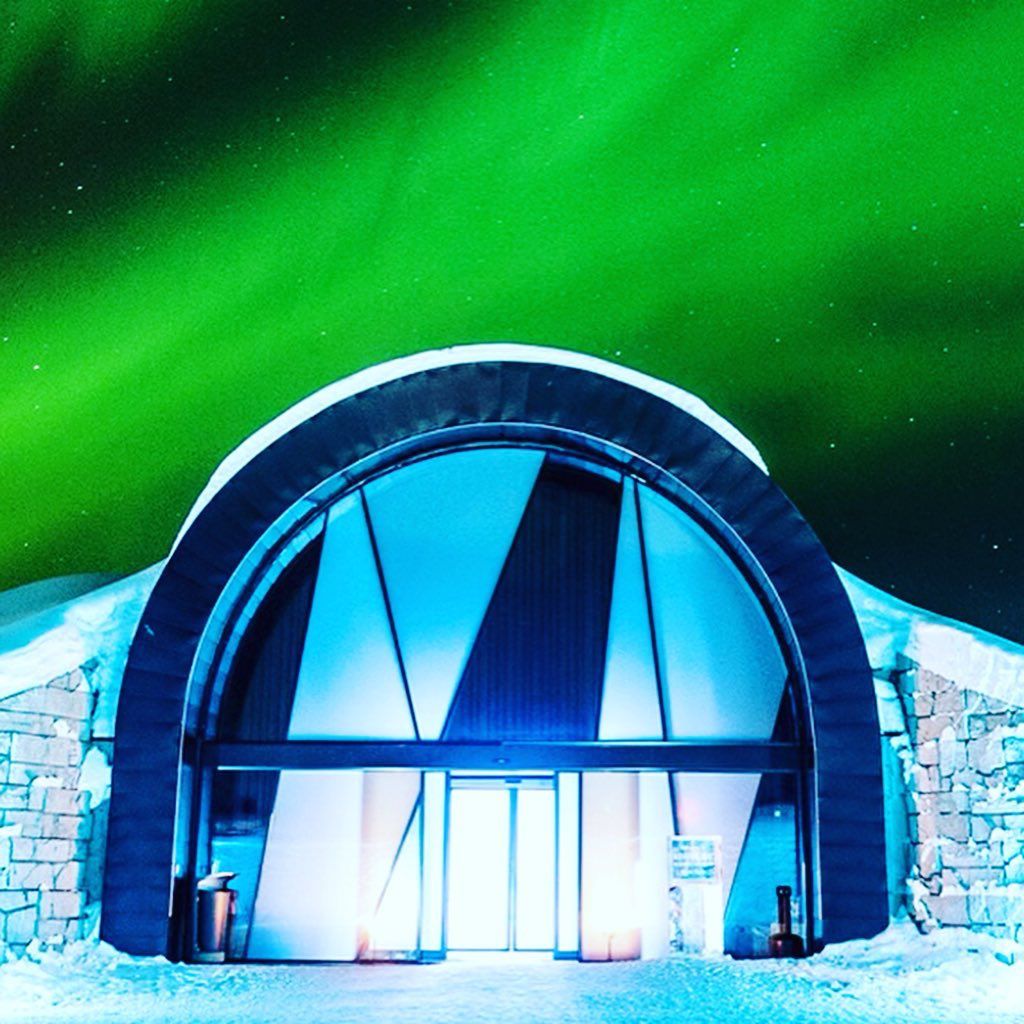Northern Lights in Norway: All you need to know before Your Visit

Are you fascinated by the ethereal beauty of the Northern Lights? Norway is undoubtedly one of the best places on Earth to witness this captivating natural phenomenon. The Northern Lights, also known as the Aurora Borealis, create a dazzling display of colorful lights dancing across the night sky.
If you’re planning a trip to Norway to experience this awe-inspiring spectacle, there are a few things you should know. In this comprehensive guide, we will explore everything you need to know before your visit to see the Northern Lights in Norway.
About Norway Northern Lights
The Northern Lights, or Aurora Borealis, is a breathtaking natural light display caused by the interaction between charged particles from the sun and the Earth’s magnetic field.
When these charged particles collide with atoms and molecules in the Earth’s atmosphere, they emit vibrant colors, creating the mesmerizing light show we know as the Northern Lights.
Norway, with its northern latitude and clear, dark skies, provides an ideal viewing location for this celestial phenomenon.
How to Take Tours of the Best Northern Lights in Norway
To make the most of your Northern Lights experience in Norway, consider taking guided tours specifically designed for viewing this natural wonder. These tours offer expert knowledge, ensuring you are in the best locations at the optimal times for Northern Lights sightings.
Knowledgeable guides will share fascinating insights about the lights and provide valuable tips for capturing stunning photographs. You can enhance your chances of witnessing this extraordinary spectacle by joining a tour.
Why does Norway have Northern Lights?
Norway’s prime location within the Arctic Circle contributes to its frequent Northern Lights displays. The country’s proximity to the North Pole places it in the auroral oval, an area where the Northern Lights are most likely to occur.
The auroral oval is influenced by the Earth’s magnetic field and solar activity. Norway’s position within this oval makes it an ideal destination for experiencing the magic of the Northern Lights.
What is Norway famous for?

Apart from the enchanting Northern Lights, Norway is famous for its remarkable natural beauty. The country is renowned for its majestic fjords, breathtaking mountains, pristine lakes, and picturesque coastal landscapes.
Norway also boasts a rich cultural heritage, known for its Viking history, traditional stave churches, and vibrant folk traditions. Additionally, Norway is recognized for its commitment to sustainability and environmental conservation.
What month can you see Northern Lights in Norway?
The Northern Lights can be seen in Norway throughout the year, but the best time to visit for optimal viewing conditions is during the winter months, from September to March. During this period, the nights are long, and the darkness provides a perfect backdrop for the luminous display of the Aurora Borealis.
However, keep in mind that the Northern Lights are a natural phenomenon, and sightings are subject to various factors such as solar activity and weather conditions.
What is the best time of year to go to Norway to see the Northern Lights?
The best time of year to visit Norway for witnessing the Northern Lights is from late autumn to early spring. This period offers the darkest nights, which enhance the visibility of the lights. Moreover, during winter, the weather conditions are typically more favorable for Northern Lights sightings, as there is less cloud cover.
Plan your trip between October and March to maximize your chances of experiencing the Northern Lights in all their glory.
Best places to see the Northern Lights in Norway
- Tromsø
Tromsø, often referred to as the “Gateway to the Arctic,” is a popular destination for Northern Lights enthusiasts. Located in northern Norway, it offers excellent opportunities to witness the Aurora Borealis. Tromsø has a vibrant city atmosphere, combined with the stunning natural beauty of the surrounding landscapes, making it an ideal base for your Northern Lights adventure.
- Lyngenfjord
Lyngenfjord is a picturesque fjord located in northern Norway, renowned for its pristine beauty. With its tranquil surroundings and minimal light pollution, it provides an idyllic setting for Northern Lights viewing. Explore the area on a guided tour or take a leisurely stroll along the fjord’s shores, allowing the magic of the lights to unfold above you.
- Bodø
Situated just north of the Arctic Circle, Bodø is another excellent destination to experience the Northern Lights. The city offers a range of activities, including guided tours, where you can embark on a thrilling chase to witness the lights. Bodø’s coastal location also presents opportunities for combining Northern Lights viewing with other outdoor adventures, such as whale watching or dog sledding.
- Vesterålen Islands
The Vesterålen Islands, located off the coast of northern Norway, provide a tranquil and remote setting for Northern Lights enthusiasts. With its breathtaking landscapes, including rugged mountains and picturesque fishing villages, this archipelago offers a unique backdrop for your Northern Lights experience. Consider staying in a cozy cabin or fishing village for an authentic and immersive encounter with the lights.
- Lofoten
Lofoten is an archipelago known for its dramatic landscapes and picturesque fishing villages. Its remote location away from major cities ensures minimal light pollution, making it an ideal spot for witnessing the Northern Lights. Take a tour to explore the scenic beauty of Lofoten by day, and as night falls, be prepared for a captivating display of the Aurora Borealis.
- Varanger
Varanger, located in northeastern Norway, is a region renowned for its stunning Arctic landscapes and rich wildlife. The area offers a unique combination of Northern Lights viewing and wildlife experiences, including birdwatching and Arctic safaris. Immerse yourself in the untouched wilderness while keeping an eye on the night sky for the elusive Northern Lights.
- Senja
Often referred to as Norway’s “fairytale island,” Senja captivates visitors with its dramatic scenery and untouched wilderness. This lesser-known gem is perfect for those seeking a quieter and more intimate Northern Lights experience. Enjoy the tranquility of Senja’s landscapes while waiting for the captivating dance of the lights to begin.
- Kirkenes
Situated in the northeastern part of Norway, close to the Russian border, Kirkenes offers excellent opportunities for viewing the Northern Lights. Due to its far-northern location, Kirkenes experiences extended periods of darkness during winter, providing ample chances to witness the lights. Consider taking a husky safari or a snowmobile tour during the day and enjoy the magical lights in the evening.
- Alta
Alta, located in the northern part of Norway, is known as the “City of the Northern Lights.” The region’s inland location and clear skies make it an ideal place for Aurora Borealis sightings. Alta offers a range of activities, including guided Northern Lights tours, snowshoeing, and visits to the iconic Northern Lights Cathedral.
- Svalbard
If you’re seeking an extraordinary Arctic experience, consider visiting Svalbard. This remote archipelago, situated between mainland Norway and the North Pole, offers unparalleled opportunities for Northern Lights sightings. Explore the frozen landscapes, encounter unique wildlife, and witness the breathtaking lights in this untouched Arctic wilderness.
- North Cape
Located on the island of Magerøya in northern Norway, North Cape is famous for being the northernmost point in Europe. It offers a remarkable vantage point to observe the Northern Lights. Stand atop the steep cliffs, marvel at the vast Arctic Ocean, and witness the mystical lights dancing across the night sky. North Cape provides a truly unforgettable Northern Lights experience.
- Narvik
Narvik, situated in the Arctic region of northern Norway, is known for its stunning natural beauty. The town is surrounded by majestic mountains and fjords, creating a picturesque backdrop for Northern Lights viewing. Take a cable car ride up Narvikfjellet Mountain for panoramic views and the chance to witness the lights in all their splendor.
- Helgeland
Helgeland, with its rugged coastline and pristine islands, is a hidden gem for Northern Lights enthusiasts. This coastal region offers a peaceful and remote setting for witnessing the lights. Explore the charming fishing villages, take a boat trip along the coast, and immerse yourself in the tranquility of this untouched Arctic paradise.
- Hammerfest
Hammerfest, located on the western coast of Finnmark in northern Norway, is known for its rich history and captivating Northern Lights displays. The town has a range of activities and attractions, including the famous Meridian Column, which marks the location of the first precise measurement of the Earth’s shape. Experience the enchantment of the Northern Lights while discovering the cultural heritage of Hammerfest.
Activities and Things to Do
In addition to witnessing the mesmerizing Northern Lights, Norway offers a variety of activities and experiences to make your trip even more memorable. Here are some recommendations for activities and things to do during your visit:
- Dog Sledding: Experience the thrill of mushing through snowy landscapes with a team of friendly and energetic huskies. Dog sledding tours are available in various locations, allowing you to immerse yourself in the Arctic wilderness while enjoying the company of these incredible animals.
- Snowshoeing: Explore the snowy landscapes of Norway on a snowshoeing adventure. Strap on a pair of snowshoes and trek through pristine forests, mountains, and valleys. Enjoy the tranquility of the winter wonderland as you walk on the glistening snow.
- Whale Watching: Norway is known for its incredible marine life, and whale-watching tours provide the opportunity to observe majestic creatures in their natural habitat. From orcas to humpback whales, you can embark on a thrilling boat excursion and witness these magnificent animals up close.
- Reindeer Sledding: Delve into the Sami culture and traditions by experiencing reindeer sledding. Glide through snowy landscapes while being pulled by reindeer, guided by the indigenous Sami people. Learn about their way of life and their deep connection to nature.
- Ice Fishing: Try your hand at ice fishing, a popular winter activity in Norway. Drill a hole in the ice, drop your line, and wait for the fish to bite. It’s a relaxing and rewarding experience that allows you to enjoy the serene surroundings while trying to catch your own dinner.
- Visit the Arctic Cathedral: In Tromsø, make sure to visit the iconic Arctic Cathedral, a stunning architectural masterpiece. Admire its unique design, featuring a towering triangular façade and striking stained glass windows. Attend a concert or simply revel in the tranquility of the surroundings.
- Explore Sami Culture: Learn about the indigenous Sami people, their traditions, and their way of life. Visit Sami museums, attend cultural events, and perhaps even try traditional Sami dishes. Gain a deeper understanding of their rich cultural heritage.
- Go Skiing or Snowboarding: Norway is a haven for winter sports enthusiasts. Hit the slopes and enjoy skiing or snowboarding in some of the country’s top ski resorts. Whether you’re a beginner or an experienced athlete, there are options for every skill level.
- Visit Arctic Wildlife Parks: Explore wildlife parks such as Polar Park in Bardu, where you can observe and learn about native Arctic animals like wolves, bears, lynx, and musk oxen. Take guided tours and see these magnificent creatures up close in a safe and natural environment.
- Enjoy Traditional Norwegian Cuisine: Indulge in the delicious flavors of traditional Norwegian cuisine. Try dishes like rakfisk (fermented fish), lutefisk (dried fish), reindeer stew, and fårikål (lamb and cabbage stew). Explore local markets and restaurants to savor the authentic tastes of Norway.
Tips for Maximizing Your Northern Lights Experience
To make the most of your Northern Lights adventure in Norway, here are some valuable tips to consider:
- Choose a dark location: To enhance your chances of witnessing the Northern Lights, opt for locations away from city lights and light pollution. Remote areas with clear, dark skies offer the best viewing conditions.
- Check the weather forecast: Keep an eye on the weather forecast and choose nights with clear skies. Cloudy or overcast conditions can obstruct the visibility of the lights.
- Dress warmly: Norway’s winter nights can be bitterly cold, especially in the Arctic regions. Layer your clothing and wear warm, insulated clothing, hats, gloves, and sturdy boots to stay comfortable while waiting for the lights.
- Be patient: The Northern Lights are a natural phenomenon, and sightings are not guaranteed. It requires patience and a bit of luck to witness the lights. Plan multiple nights for your Northern Lights adventure to increase your chances of seeing them.
- Stay informed: Stay updated on solar activity and Northern Lights forecasts. Websites and apps provide real-time information on solar activity levels and the likelihood of Northern Lights displays.
- Capture the moment: Bring a camera with manual settings to capture the beauty of the lights. Use a tripod for stable shots, and experiment with long exposure settings to capture the vivid colors and movements of the Aurora Borealis.
Capturing the Northern Lights: Photographing Tips to Capture in Norway
Photographing the Northern Lights can be a rewarding and challenging experience. Here are some tips to help you capture stunning images of the lights during your visit to Norway:
- Use a tripod: Stability is crucial when photographing the Northern Lights. A sturdy tripod will eliminate camera shake and allow for long exposure shots.
- Set a wide aperture: Use a wide aperture (low f-number) to capture as much light as possible. This will help you capture the vibrant colors and details of the lights.
- Adjust ISO and shutter speed: Experiment with different ISO settings and shutter speeds to find the right balance. Higher ISO values can make the image more sensitive to light, but be mindful of noise. Longer shutter speeds allow for more light to enter the camera sensor, but may result in motion blur if not stabilized.
- Manual focus: Switch to manual focus and set it to infinity. This will ensure sharpness in your images, as autofocus may struggle in low light conditions.
- Compose your shot: Consider including interesting foreground elements, such as trees, mountains, or buildings, to add depth and context to your Northern Lights photographs.
- Take test shots: Experiment with different settings and take test shots to review the results. Adjust your settings accordingly to achieve the desired outcome.
Remember, photographing the Northern Lights requires practice and patience. Don’t be discouraged if your first attempts don’t meet your expectations. Embrace the experience and enjoy the beauty of the lights in the present moment.
Safety and Precautions
While witnessing the Northern Lights is a magical experience, it’s essential to prioritize safety during your trip. Here are some safety tips to keep in mind:
- Dress appropriately: Wear warm, layered clothing to protect yourself from cold temperatures. Include hats, gloves, and insulated footwear to stay comfortable in freezing conditions.
- Stay visible: If you’re exploring remote areas, especially during twilight or darkness, wear reflective gear or carry a flashlight to ensure your visibility to others.
- Be cautious of the surroundings: When venturing into unfamiliar areas, be mindful of your surroundings. Watch out for icy or slippery surfaces, particularly in winter.
- Follow local guidelines: If you’re participating in guided tours or activities, follow the instructions provided by the guides. They have the knowledge and experience to ensure your safety during the Northern Lights expedition.
- Keep an eye on the weather: Weather conditions in Norway can change rapidly. Stay informed about any weather warnings or advisories and adjust your plans accordingly.
- Respect nature: Norway is known for its pristine landscapes. Respect the environment by adhering to the principles of Leave No Trace. Take your trash with you, avoid damaging flora and fauna, and maintain a responsible attitude towards the natural surroundings.
By following these safety guidelines, you can have a safe and enjoyable Northern Lights experience in Norway.
Nearby Accommodation
Norway offers a range of accommodation options to suit different preferences and budgets. Whether you’re looking for luxury hotels, cozy cabins, or budget-friendly hostels, there are plenty of choices. Here are some popular accommodation options near Northern Lights viewing locations:
- Tromsø: Radisson Blu Hotel Tromsø, Clarion Hotel The Edge, Tromsø Lodge & Camping
- Alta: Sorrisniva Igloo Hotel, Thon Hotel Alta, Northern Lights Igloo
- Lofoten: Reine Rorbuer, Henningsvær Bryggehotell, Eliassen Rorbuer
- Svalbard: Radisson Blu Polar Hotel Spitsbergen, Funken Lodge, Mary-Ann’s Polarrigg
- Kirkenes: Thon Hotel Kirkenes, Scandic Kirkenes, Snowhotel Kirkenes
When booking your accommodation, consider proximity to Northern Lights viewing spots, amenities, and reviews from previous guests to ensure a comfortable stay during your visit.
Things to Avoid
To ensure a smooth and enjoyable Northern Lights experience, there are a few things to avoid:
- Light pollution: To maximize your chances of seeing the Northern Lights, avoid areas with excessive light pollution. City lights and artificial lighting can diminish the visibility of the lights.
- Overplanning: While it’s essential to have a general itinerary, leave room for spontaneity. Weather conditions and solar activity can be unpredictable, so be flexible with your plans to maximize your chances of witnessing the Northern Lights.
- Excessive expectations: Keep in mind that the Northern Lights are a natural phenomenon, and sightings are never guaranteed. Manage your expectations and enjoy the journey and the other natural wonders that Norway has to offer, even if the lights don’t appear.
- Ignoring safety guidelines: Always prioritize safety during your Northern Lights adventure. Follow the instructions of guides, dress appropriately for the weather, and be cautious of your surroundings.
- Leaving trash behind: Respect the natural beauty of Norway by practicing responsible tourism. Take your trash with you and leave the environment as you found it.
By avoiding these common pitfalls, you can ensure a memorable and enjoyable Northern Lights experience in Norway.
Conclusion
Embarking on a journey to witness the Northern Lights in Norway is an experience like no other. The enchanting dance of colors across the night sky will leave you in awe of the beauty of nature. With its prime location, Norway offers numerous opportunities to catch a glimpse of this mesmerizing phenomenon. From Tromsø to Svalbard, the country is dotted with stunning destinations where you can immerse yourself in the magic of the Northern Lights.
By following the tips and recommendations in this guide, you can maximize your chances of witnessing the Northern Lights in all their glory. Whether you choose to join a guided tour, explore remote landscapes, or capture the lights with your camera, the Northern Lights in Norway promise an unforgettable adventure.
So pack your warmest clothes, prepare your camera, and get ready to be amazed by the celestial spectacle that is the Northern Lights in Norway.
How much did you like Our detailed insider Northern Lights in Norway: All you need to know before Your Visit. Review Also, please share these Blogs with your friends on social media.
Related Post:-
- Northern Lights
- Photographing the Northern Lights
- Northern Lights Adventure
- Northern Lights Travel Experiences
- Best Month to See the Northern
Northern Lights in Norway FAQ
What causes the Northern Lights to occur?
The Northern Lights are caused by the interaction between charged particles from the sun and the Earth’s magnetic field. When these particles collide with atoms and molecules in the Earth’s atmosphere, they emit vibrant colors, creating the Northern Lights.
How long do the Northern Lights usually last?
The duration of the Northern Lights display can vary. It can last anywhere from a few minutes to several hours, depending on the intensity of the solar activity and the atmospheric conditions.
Can you see the Northern Lights in other countries besides Norway?
Yes, the Northern Lights can be seen in several other countries located within or near the Arctic Circle, such as Iceland, Sweden, Finland, and Canada.
Is it possible to predict when the Northern Lights will appear?
While it is not possible to predict the Northern Lights with absolute certainty, there are tools and resources available that can provide forecasts based on solar activity and weather conditions. Websites and apps dedicated to Northern Lights forecasting can give you an idea of the likelihood of sightings.
Are there any myths or legends associated with the Northern Lights?
Many cultures around the world have myths and legends associated with the Northern Lights. In Norse mythology, it was believed that the lights were reflections from the shields of the Valkyries as they led fallen warriors to Valhalla.
Can the Northern Lights be seen during the summer months in Norway?
While the Northern Lights can technically occur year-round, the summer months in Norway have extended daylight and less darkness, making it challenging to see the lights. The best time to see the Northern Lights in Norway is during the winter months when nights are longer and darker.
What is the best camera equipment for capturing the Northern Lights?
For capturing the Northern Lights, it is recommended to use a camera with manual settings, such as a DSLR or mirrorless camera. A wide-angle lens with a low aperture (f/2.8 or lower) is ideal for capturing the vibrant colors and wide expanse of the lights. A sturdy tripod is also essential for stability during long exposure shots.
What is the cheapest way to see the Northern Lights in Norway?
Opting for budget-friendly accommodation, traveling during the off-peak season, and planning your own itinerary can help reduce costs. Additionally, joining group tours or excursions can be a more affordable way to experience the Northern Lights compared to private tours.

Meet David Hoper, a passionate travel Blog writer with 7+ years of experience in travel content. Through his exemplary storytelling and engaging narratives, he shares his experiences and brings destinations to life. With a keen eye for detail and a love for exploration, he has cultivated a diverse portfolio of travel blogs that inspire and inform readers worldwide.
